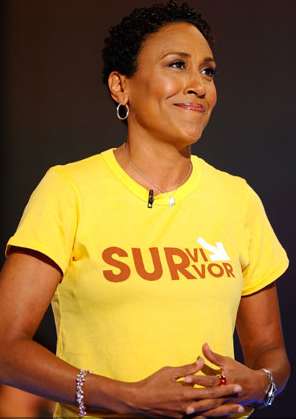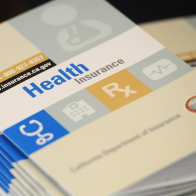 The facts are clear. Breast cancer is the most common cancer among African-American women. And black women’s breast cancer mortality rates are higher than their white female counterparts. After lung cancer, breast cancer is the highest killing cancer among black women. And unfortunately, the solution to this problem is multifaceted. Black women’s high breast cancer mortality rates could be caused by the differences in access to medical care, utilization of early detection precautions, treatment, and differences in tumor characteristics compared to their white female counterparts.
The facts are clear. Breast cancer is the most common cancer among African-American women. And black women’s breast cancer mortality rates are higher than their white female counterparts. After lung cancer, breast cancer is the highest killing cancer among black women. And unfortunately, the solution to this problem is multifaceted. Black women’s high breast cancer mortality rates could be caused by the differences in access to medical care, utilization of early detection precautions, treatment, and differences in tumor characteristics compared to their white female counterparts.
In terms of early detection, it’s essential that every woman learns how to perform an efficient breast self-exam, but mammograms are another option that women often seem to fear. Here are nine things you should know about mammograms.
 The Definition. A mammogram is an x-ray picture of the breast. There are two types of mammograms available to patients: a screening mammogram and a diagnostic mammogram.
The Definition. A mammogram is an x-ray picture of the breast. There are two types of mammograms available to patients: a screening mammogram and a diagnostic mammogram.- How a Screening Mammogram Works. Screening mammograms usually involve two x-ray pictures, or images, of each breast. The x-ray images can detect tumors that cannot be felt during your self-exam, and also finds microcalcifications (tiny deposits of calcium) that possibly could indicate the presence of breast cancer. Screening mammograms are precautionary; you don’t need to discover an abnormality first before receiving one.
- How a Diagnostic Mammogram Works. Diagnostic mammograms take longer than screening mammograms because more x-rays are taken to obtain views of the breast from different angles. Usually, the patient is no longer seeking precautionary measures, but looking to know more about a lump, sign, or symptom that already has been found. Signs of breast cancer may include pain, skin thickening, nipple discharge, and a change in breast size or shape. However, these signs also can be non-cancerous, and diagnostic mammograms can help doctors make accurate diagnoses.
 The Good Side of Screening Mammograms. Early detection of breast cancer means that treatment can start earlier, and possibly before the disease has spread. Studies have proven that screening mammography can help reduce the numbers of deaths from breast cancer among women ages 40 to 74, especially those over age 50. However, studies have not proven that there is a benefit from regular screening mammography in women under age forty.
The Good Side of Screening Mammograms. Early detection of breast cancer means that treatment can start earlier, and possibly before the disease has spread. Studies have proven that screening mammography can help reduce the numbers of deaths from breast cancer among women ages 40 to 74, especially those over age 50. However, studies have not proven that there is a benefit from regular screening mammography in women under age forty.- The Bad Side of Screening Mammograms. Fast-growing or aggressive cancers may have already spread to other parts of the body, regardless of whether or not a screening mammogram has been taken. There also have been false-negative results, when mammograms appear normal even though breast cancer is present. Screening mammograms miss up to 20% of breast cancers that are present at the time of screening, mainly caused by breast density (dense and fatty tissue in the breast). Younger women are more likely to have denser breasts. False-positive results also have occurred when radiologists conclude that the mammogram is abnormal but no cancer is actually present. Again, this is more common in younger women. All abnormal mammograms should be followed up with additional testing: diagnostic mammograms, ultrasound, and/or biopsy. There’s also the risk of radiation exposure, as with all x-rays. And repeated x-rays have the potential to cause cancer. The radiation exposure of resulting from mammograms is very low; thus, the benefits tend to outweigh the risk.
 The Best Age to Begin Screening Mammograms. Women age 40 and older should receive screening mammograms every 1 to 2 years. But women who have a personal or family history of breast cancer should talk with their health care providers and decide whether or not to have mammograms before the age of 40 and if so, how often.
The Best Age to Begin Screening Mammograms. Women age 40 and older should receive screening mammograms every 1 to 2 years. But women who have a personal or family history of breast cancer should talk with their health care providers and decide whether or not to have mammograms before the age of 40 and if so, how often.- How Much Do Mammograms Cost? Unfortunately, the cost of screening mammograms tends to vary by state, facility, and insurance coverage. Thankfully, most states have laws that require health insurance companies to reimburse all or part of the cost of screening mammograms. If you’re insured, contact your insurance company and mammography facility for information about cost and coverage. Women over the age of 40 with Medicare can get a free screening mammogram each year, and Medicare will pay for one baseline mammogram for female beneficiaries between the ages of 35-39. Uninsured women also can get free or low-cost mammograms through calling the National Cancer Institute’s Cancer Information Service (CIS) at 1-800-232-4636.
 Where Can You Get a High-Quality Mammogram? Women can get high-quality mammograms at breast clinics, hospital radiology departments, private radiology offices, and doctors’ offices. Find a facility using the Center for Disease Control and Prevention (CDC) website.
Where Can You Get a High-Quality Mammogram? Women can get high-quality mammograms at breast clinics, hospital radiology departments, private radiology offices, and doctors’ offices. Find a facility using the Center for Disease Control and Prevention (CDC) website.- Know Your Legal Protections. The Mammography Quality Standards Act (MQSA) is a Federal law designed to ensure that mammography is safe and reliable. In the United States, the Food and Drug Administration (FDA) or an FDA-approved Certifiying State must certify all mammography facilities. The facility must have mammography equipment that is tested periodically, employ trained personnel to administer tests and interpret data, and have a quality assurance program. They also must have a system for following up on abnormal mammographic findings and obtaining biopsy results. Ask your doctor or staff at the local mammography facility about FDA certification before making an appointment. All facilities are required to display their FDA certificate, and women should look for the certificate and check for its expiration date.
Have any questions about breast cancer or mammograms? Visit The Denise Roberts Breast Cancer Foundation’s website, the sponsor for Frugivore’s National Breast Cancer Awareness Month. Read more National Breast Cancer Awareness Month articles here.
Source: Susan G. Komen, National Cancer Institute







Breast self examination as regularly as weekly to as often as every time you shower is an important measure for early detection in all women and is readily available to all ages of women. This is the first step to early detection. Because of all of the false positives and false negative, it becomes paramount. And if you detect something different about your breasts, don’t stop with just a negative mammogram insist on an ultrasound and/or an MRI to be certain.